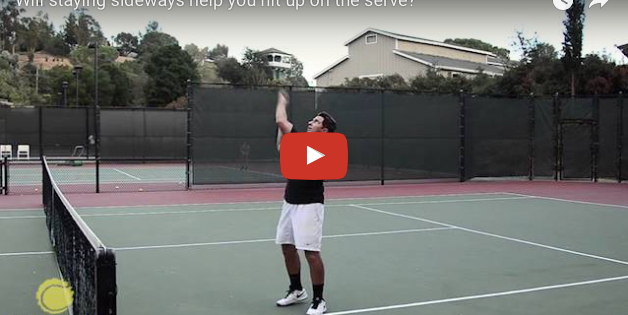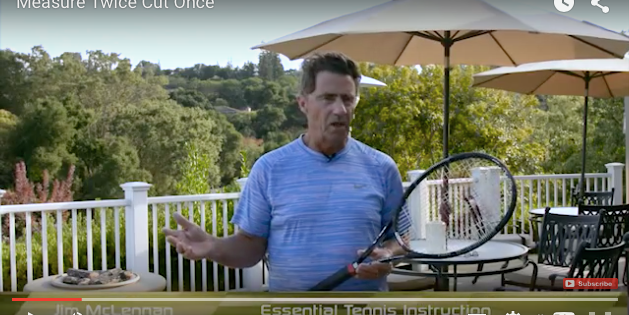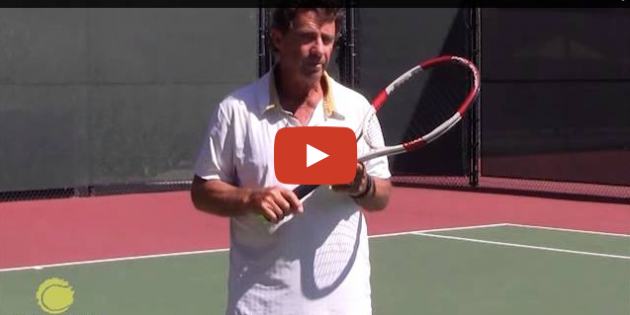Listen to your hits
Watching the ball – moving into position – you can always listen to the outcome!
Discover Your Opponent’s Weakness
Running patterns requires knowing your opponent’s strengths and weaknesses. Rather than learning as the match progresses – what if there is a way to get that idea much much sooner
Priming – The Art of Winning
Create patterns to discover the opponent’s weakness Always listen for advertisements
ETI 050 | Multitasking on Court
No judgment, one shot at a time, where the “winning takes care of itself.” Well in the 1970’s before we ever knew of multitasking or mindfulness – those concepts were developed in a breakthrough book – The Inner Game of Tennis. Are you mindless or mindfull on court? Want more – check out Mindset by…
ETI 049 | Racquet Rebound Potential
How tight, or loose should your grip be? Common sense suggests tight. This experiment, done by real “tennis scientists” confounds the issue. Enjoy
ETI 048 | 8 Board on Court
Lagging A dog wagging it’s tail Centered Balanced Simple but deceptively difficult
ETI 047 | Will Staying Sideways help you hit up on the serve!

The common problem I see at the club, as well as on television, is where the server flexes at the waist at the hit – more or less jackknifing to create a little more ball speed.
And this action creates both forward and downward forces – and is generally associated with netted serves.
Overhand Throwing – a Template for the Serve
Habits, Injuries, Resistance to Change – and Overhand Throwing Technique Todd Ellenbecker, “Tennis teaching professionals can identify players of all ability levels, even high level players, who have less than optimal biomechanics on their serve. Often … their throwing mechanics also are less than optimal and have many similar characteristic patterns. Some of the same inherent…
ETI 046 | Gravity Motion
Agility = moving quickly and easily. We know when we are gliding, we know when we are moving heavily. Equally, when can see on the adjacent court who moves well and who does not. But often more than strength training or explosive movement, the secret can be in a subtle unweighting where the body leads…
ETI 045 | Sidespin Serve
Pete Sampras, “I won 7 Wimbledon titles because I had the best second serve in the game.”
The second serve is about spin that will make the ball curve down as it crosses the net. Yes it may corner the opponent and either swing them wide and out of court, or kick up into their backhand.
ETI 044 l Topspin and the Racquet Drop
Consider the critical 24 inch hitting zone when creating topspin on a forehand or on a serve – to create this spin the racquet must be swung up from beneath the ball (12 inches) but carry upward after impact (another 12 inches) to create the rolling spin that more and more of us want in…
ETI 043 | Point of Contact Area of Contact
Ball control – ours is a game of accuracy, of consistency, but equally it is a game of timing for the opponent will send us shots of varying spin, speed, length and difficulty. Timing describes the relation between the incoming ball and the swinging racquet – and certainly the entire game revolves around the moment…
ETI 042 | Measure Twice Cut Once

https://dg2e30wx7kvei.cloudfront.net/eti_podcast/ETI_042_Measure_Twice_Cut_Once.mp4 The carpenter measures twice to cut once, to make sure the cut is accurate, for if too much is cut off that mistake cannot be undone. In tennis consider measuring as preparing first to the side for the incoming ball, but then to measure precisely the height of the backswing such that the racquet…
ETI 041 | Quantum Tennis/Golf
Many interesting parallels have been drawn between the tennis serve and the golf swing. Once the tennis player (or golfer) gets the feel for the mechanical elements of the serve (or golf swing) then rhythm becomes the overriding issue. Does the swing build smoothly and gracefully? Is there economy of effort? Can the server (golfer) swing easily yet hit hard? Are the body parts coordinated so that the force from the legs moves to the hips, and then to the torso, and then to the shoulder, then the arm, then the forearm, then the hand, and finally the fingers?
ETI 040 | The “X” Factor
Rotational body power But, is there a way to separate the hips from the shoulders as one winds up or unwinds The “X” Factor shows how to get a little more stretch and release
ETI 039 | Improvise (when necessary) on the tennis court
A few years ago I was encouraged to take a class in improvisational theater. It took me months to find the courage (stage fright and more) but I finally enrolled and then thoroughly enjoyed this class within the Stanford continuing studies program.
ETI 038 | Dead Hands
The 3 R’s of tennis – ready, read (where the ball is going) react!
As to your reaction – what precisely is your first move? What moves first, what initiates your preparation?
Really an important question.
ETI 037 | The Art of Winning

80% of the points in professional end with an error, 20% with a winner.
As regards unforced errors, if your opponent never misses and is patient as the day is long, would you consider missing a routine forehand in the 12th shot of a rally a forced or unforced error.
I am now believing that errors are simply errors, and the distinction is unnecessary.
ETI 036 | Spin – Changing Two Things at Once
Three factors control your tennis shot – not your feet, not your eyes, not your balance (though all of those do help) but the only three elements are; Angle of the racquet face, Swing Path and Tempo.
Chip Block Return of Serve
Simplify Hold your ground Take the ball early Certainly easier said than done But if you explore “time and angle” in these pages, a great deal of the game, if not the most important part of the game, is to learn how to use the court, and how shot selection varies with court positioning In…
Underspin Floater
At the 2022 Australian Open finals, Rafa Nadal used this shot to neutralize Daniil Medvedev, slow down the play, and essentially center Medvedev To my eye Medvedev is more dangerous from the corners if not on the run, but as the match wore on somehow he became more cautions with his shots And these floaters…
ETI 035 | The Dead Spot on the Racquet Face
Swing path, type of spin, power, 3d playback (with Zepp) but perhaps the most interesting as well as the most useful is the data that shows where you make contact on the racquet face.
And before going further, one of the most important (IF NOT THE MOST IMPORTANT) skills in the game of tennis is concentration, focus, and closely and continually watching the ball.
ETI034 | Creating your own Report Card
Take a few moments with the following report card – a method to either evaluate your own skills, or use this with your coach or regular practice partner.
The idea is to take a deeper look at your “Use” – the broader issues that influence all you do on court, your awareness, the elements that make you a strong player, but equally perhaps the element that is holding you back.

Recent Comments